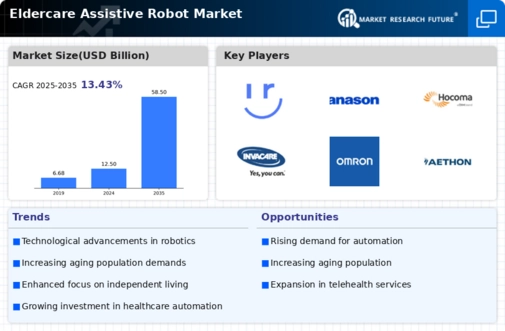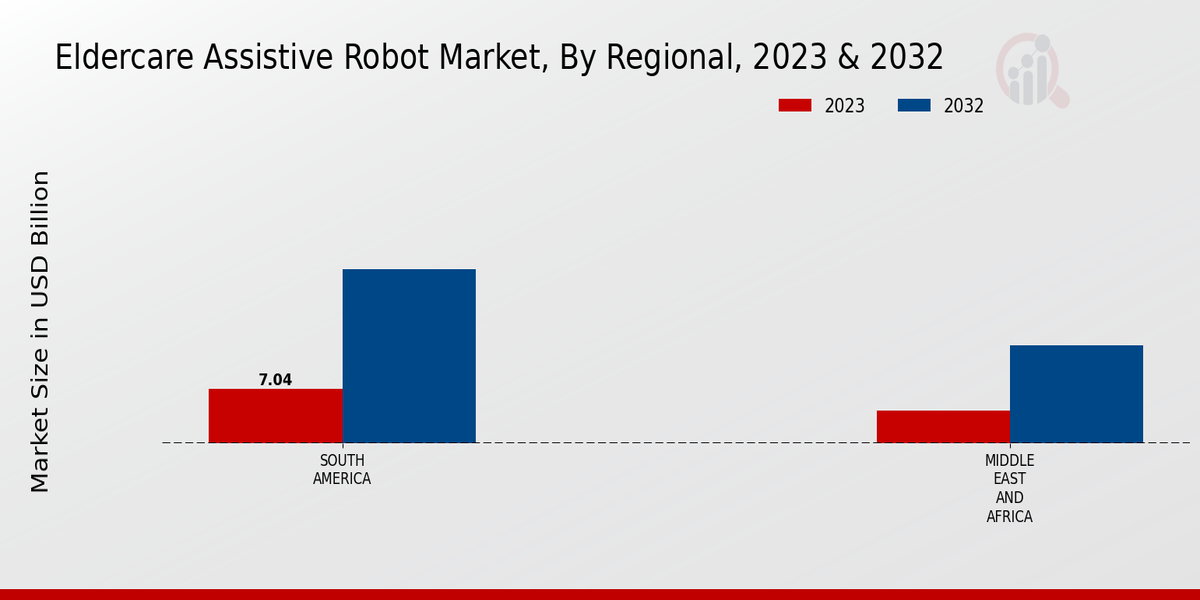Eldercare Assistive Robot Market Summary
The Global Eldercare Assistive Robot Market is projected to experience substantial growth from 14.48 USD Billion in 2024 to 57.92 USD Billion by 2035.
Key Market Trends & Highlights
Eldercare Assistive Robot Key Trends and Highlights
- The market is expected to grow at a compound annual growth rate (CAGR) of 15.03% from 2025 to 2035.
- By 2035, the market valuation is anticipated to reach 58.5 USD Billion, indicating a robust demand for eldercare solutions.
- in 2024, the market is valued at 14.48 USD Billion, reflecting the increasing investment in assistive technologies.
- Growing adoption of robotic solutions due to an aging population is a major market driver.
Market Size & Forecast
| 2024 Market Size | 14.48 (USD Billion) |
| 2035 Market Size | 57.92 (USD Billion) |
| CAGR (2025-2035) | 13.43% |
Major Players
Intuition Robotics, Panasonic, Hocoma, Invacare, Omron Healthcare, Inc., Samsung Electronics Co., Ltd., iRobot, Fujitsu Limited, ReWalk Robotics Ltd., Ekso Bionics Holdings, Inc., SoftBank Robotics Corp., Aethon, Inc., Koninklijke Philips N.V., Bionik Laboratories Corp.

















